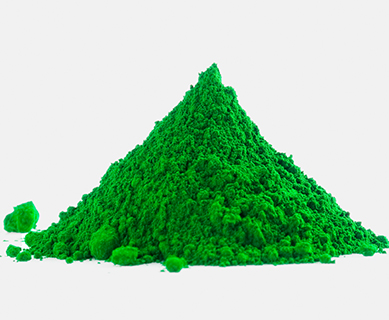What Is Fluorescent Pigment And How Does It Work?
What Are Fluorescence Colors?
'Fluorescent' colors soak up and throw back more light than conventional colors. Since fluorescent pigment absorbs and disperses more light, they appear brighter, dazzling, vivid, and eye-catching. Fluorescent is more commonly known as neon pigments. The neon pigments use large amounts of both the visible spectrum and lower wavelength. The difference between conventional colors and neon pigment powder is that fluorescent pigment powder soaks up and transforms the light energy of the dominant wavelength. Still, it also transforms the wavelength of ultraviolet rays. However, other conventional colors get lower in the visible spectrum.
Basic Understanding Of Fluorescent Pigments.
Lights can provoke fluorescent pigments to emit a brighter, scintillating, flashing, and more dazzling hue than conventional pigments. UV light is generally responsible for the brilliant light and shine of fluorescent pigments; thus, it is also known as UV fluorescent pigments. A plethora of UV radiation in a blacklight will make the pigments appear very bright and vivid. If you want the pigments to appear bright and vivid without using the blacklight, use pigments provoked by daylight.
What Do You Mean By Daylight Fluorescent Pigments?
Pigments that can be provoked by daylight to emit brighter and more vivid colors than conventional pigments are known as fluorescent pigments. Fluorescent pigments are fluorescent dyes captured in resins or polymers to produce fluorescent pigment powders.
Objects painted with conventional Pigment Green 7 are seen three times late than objects painted with fluorescent pigments. Fluorescent pigment powder is used to paint such objects where it is beneficial for the objects to catch consumers' attention. Objects including cosmetics, sportswear, safety gear, warning signs, and stationery are painted with neon pigment powder to make them more eye-catching. The advertisement and packaging industry also uses fluorescent pigments to make them more attractive and catch customers' attention. Industries such as paint, ink, oil, and water also use fluorescent pigments to make objects more attractive and eye-catchy.
How Does Fluorescent Pigment Powder Work?
When the light waves hit the molecule, a photon gets captivated and provides the system with energy. The system energy will push an electron from the ground state to an exciting stage. The molecule then goes through various phases but the ones relevant here are – vibrational relaxation, internal conversion, and fluorescence.
The Process Of Vibrational Relaxation.
Each energy state has more minor energy levels called the vibrational levels. The electron will drop between these energy levels from where it was initially to its lowest vibrational energy level within the exciting stage. The drop in the electron is called vibrational relaxation. The electron drop process also emits a tiny amount of energy as heat energy.
The Process Of The Internal Conversion.
When the electron is at its lowest vibrational energy level of the state, it needs to drop to the next energy state. Suppose the electron drops at any excited state except the initial one. It will only be possible by going from a lower vibrational energy level of the higher excited state to a high vibrational energy level of the excited state under it which sits at a similar energy value. In this process, no energy is lost or gained. Thus, it is known as the isoenergetic process.
The Process Of Fluorescence.
After going through the phase of vibrational relaxation and internal conversion, the electron reaches the lowest vibrational level of the first excited state. Fluorescence happens as the electron reaches down to the ground state. The energy which remains will get released in the form of photons of light. After going through the process of vibrational relaxation, the energy released in the form of photons of light is not the same amount of energy that was initially absorbed but lower. A low amount of energy means the released photons will have less frequency and high wavelength.
Why Does Fluorescence Take Place?
The nucleus consists of electrons that are negatively charged. The electrons present in the nucleus have different energy levels. A low energy state is always preferred in the atom. When atoms combine to form molecules, they only do it because this combination will lower their energy and make them more stable. When atoms combine to form molecules, energy levels known as orbitals are formed. It is in the orbitals that electrons are present. Every atom and molecule has different energy levels, and the entire system is said to be quantized.
The ground state, also called the lowest possible energy system, is where the system always exists. The system will always favor the lowest possible energy system. When the system is put with energy, the molecule is in its exciting stage and will quickly go through phases that will release energy from the system to return to the lowest energy state, also known as the ground state. One such phase is fluorescence which happens in this system.
Characteristics Of Daylight Fluorescent Pigments Required For Application.
For the daylight fluorescent pigments to be as effective as the fluorescent pigment, they should contain certain features and characteristics:
- The luminosity of the daylight fluorescent pigments should be very bright and should have a brilliant fire
- The daylight fluorescent Pigment Green 7 Manufacturer should be stable when exposed to heat and light.
- Resistant to solvents and water is essential for any pigment to function correctly. When pigments are introduced to the substance, they should not dissolve in it or form a gel. Therefore, the daylight fluorescent pigments should be solvent resistant and liquid-resistant so that when it is introduced to a substance, it gives the object a very bright light and fire.
- The daylight fluorescent pigment powder should also have opacity and transparency features to function efficiently in some industries.




